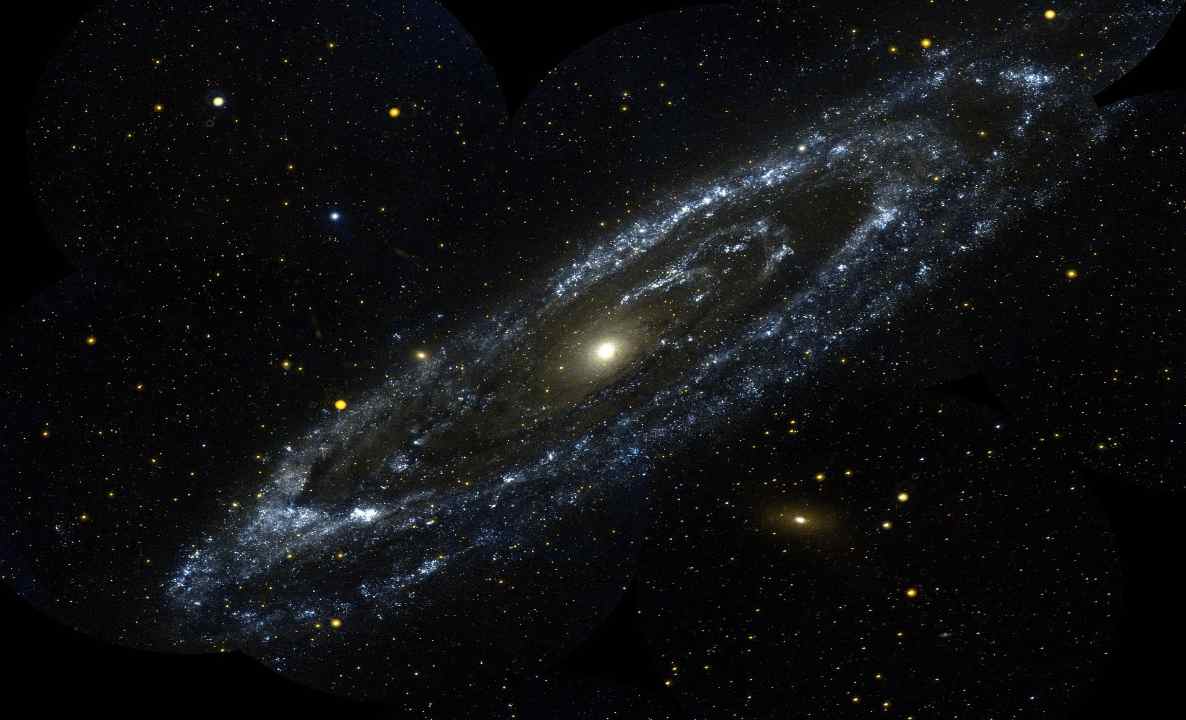An eminent physicist proposes a new theory called “post-quantum classical gravity,” according to which there is no need for dark matter and dark energy to explain the expansion of the universe and the rotation of galaxies. According to this principle, space-time would fluctuate randomly, that is to say, breaking with physical predictability. Although controversial, this theory could help unify Einstein’s theory of gravity and quantum mechanics.
According to the standard model of cosmology, visible matter represents only 5% of the total mass of the universe, with the rest being energy and dark matter. Many observations have suggested that dark energy could be responsible for the expansion of the universe, while dark matter explains the rotation of galaxies.
Indeed, based solely on the observation of visible matter, gravity should normally attenuate with distance relative to the galactic center, and the rotation of the stars should thus decrease. However, the orbital movement of stars at the edge of galaxies does not decrease. The gravitational attraction of the surrounding dark matter, according to physicists, affects their movement.
However, despite these observations, the true nature of dark matter remains a mystery. Experiments, such as those carried out at the Large Hadron Collider (LHC), have never yet made it possible to observe it directly. According to Jonathan Oppenheim of University College London, “in the absence of any direct evidence for the existence of dark energy or dark matter, it is natural to wonder whether it is not useless scientific constructs like the “celestial spheres,” the ether, or the planet Vulcan, all of which have been replaced by simpler and more coherent explanations.
In fact, “gravity has a long history of illusionism,” he explained in a new study pre-published on arXiv. In the context of the latter, he notably raises the possibility that dark matter and dark energy may not exist at all. According to his new principle called “postquantum theory of classical gravity,” it is possible to explain the expansion of the universe as well as the movement of galaxies in the absence of dark matter and dark energy.
Space-time flowing randomly?
Modern physics is based on two principles: quantum mechanics, governing the smallest particles in the universe, and Einstein’s general relativity, governing gravity in particular. More precisely, all matter in the universe obeys the laws of quantum mechanics, but quantum behavior can only be observed at the scale of molecules and atoms.
However, these two theories have many points of contradiction and are fundamentally incompatible. Physicists suggest that, in order to unify them, Einstein’s theory of gravity must be modified to fit quantum mechanics. This approach is notably explored in the context of string theory and loop quantum gravity.
In describing his new theory, Oppenheim instead suggests an approach where gravity and quantum mechanics would be unified while preserving Einstein’s classic concept of space-time. In this scenario, quantum mechanics would not have an impact on space-time. On the other hand, it would flow randomly, i.e., in a fundamental break with the predictability of physics. In other words, space would be randomly distorted, and time would fluctuate unpredictably in different parts of the universe.
Space-time would experience unpredictable and violent fluctuations as a result, which would be much larger than what quantum mechanics typically predicts. According to Oppenheim, this would make the apparent mass of objects unpredictable if measured precisely enough. According to this principle, these fluctuations would be high enough to maintain the movement of stars at the edge of galaxies and cause the expansion of the universe (in place of dark matter and energy).
Note, however, that this effect would be negligible within phenomena requiring strong gravitational interaction, including the maintenance of planets in orbit around the Sun. Nevertheless, in areas of low gravity (such as the edges of a galaxy), spacetime fluctuation would be large enough to cumulatively account for the majority of the energy in the universe. “We show that this can explain the expansion of the universe and the galactic rotation curves without the need for dark matter or dark energy,” Oppenheim said in one of his publications on X.
On the other hand, the theory has not failed to arouse skepticism in the eyes of other physicists, who particularly question its reliability as well as its ability to unify quantum mechanics and gravity, according to Einstein. On the other hand, “we urge caution because there is other indirect evidence for dark matter, so additional calculations and comparisons with the data are necessary,” Oppenheim said. The latter plans to conduct different experiments with his team in order to continue to explore his hypothesis.
Reference: Jonathan Oppenheim, Andrea Russo, Anomalous contribution to galactic rotation curves due to stochastic spacetime, arXiv:2402.19459https://arxiv.org/abs/2402.19459
